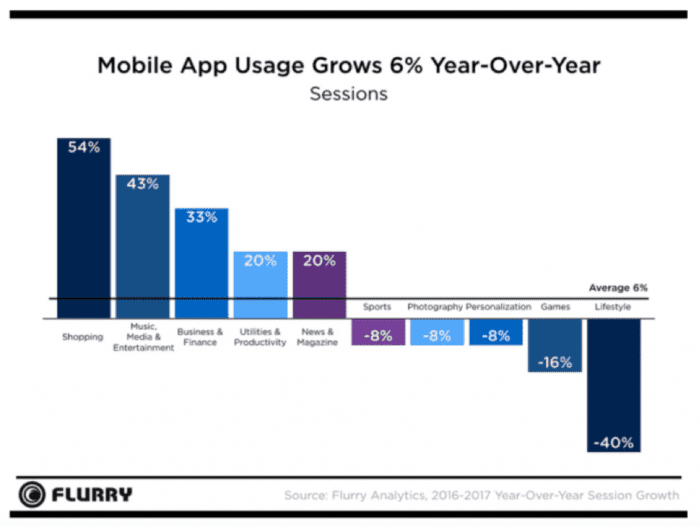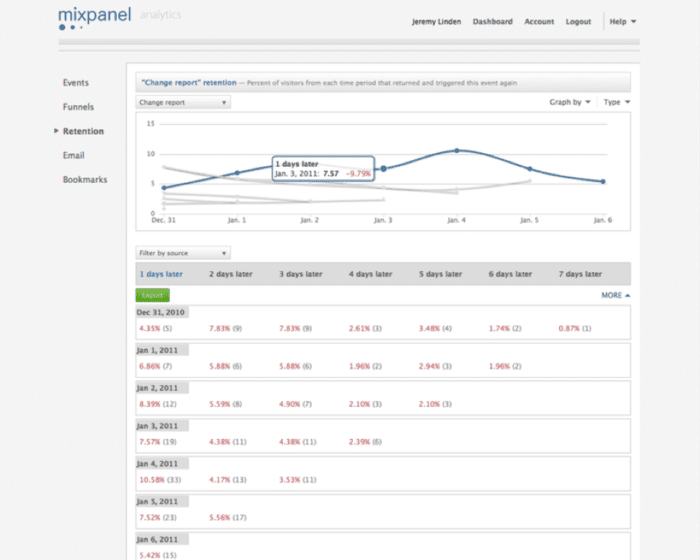A successful mobile app can help provide a better user experience but also help your business. Here are five ingredients you need to make your app successful
The continuing growth of mobile has transformed our relationship with the web. What was once a space dominated by desktop is now very much mobile-first, with some countries seeing more than four times higher smartphone versus desktop audience.
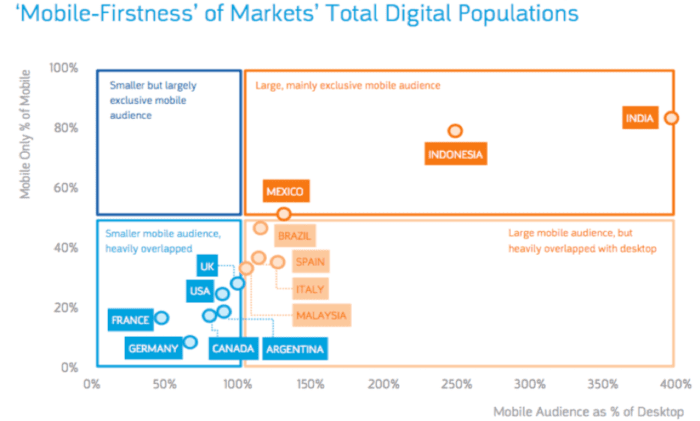
[Image Source: Comscore]
In the UK,
the majority (62%) of time spent on the internet is on mobile devices, and at least 78% of adults now own a smartphone.
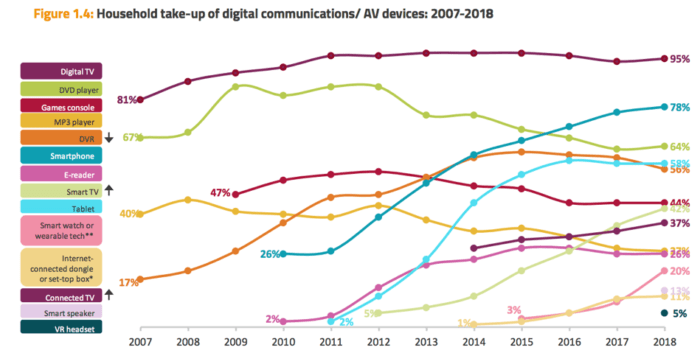
[Image source: Ofcom]
However, the role of the desktop is by no means redundant. Data from Comscore shows that the majority of consumers are multiplatform and multi-screening, accessing sites on mobile and desktop.
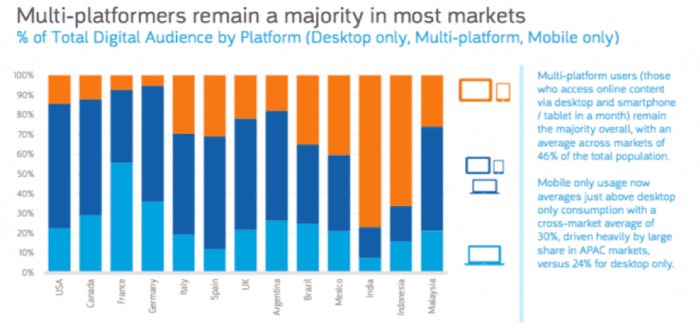
[Image source: Comscore]
Nevertheless,
mobile marketing data from multiple sources offers a stark reminder that businesses and brands must pay close attention to how customers are interacting and engaging online and develop consistent experiences across channels. Desktop is still the default starting point for many marketers but ignoring mobile is a missed opportunity.
Mobile app usage dominates browsers
So whilst we know that mobile dominates people’s time online, where is this time being spent?
The latest Comscore global mobile report 2018 shows that more than 80% of mobile minutes in all markets are spent in apps.
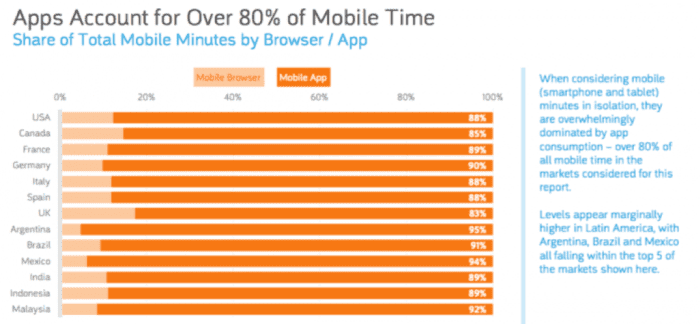
[Image source: Comscore]
Data from
Flurry’s State of App Usage report shows that mobile app usage is growing by 6% year-on-year.
These data and insights strongly indicate that creating a mobile app should form a part of your thinking when developing your overall mobile marketing strategy. Consumers are looking for a compelling app experience, although bear in mind that certain sectors (games, social networking, shopping) dominate this space.
If you conduct your research and conclude that there is a genuine opportunity, then creating a mobile app should certainly come into your plans.
Creating a compelling mobile app experience
If you’ve carried out your due diligence and concluded that the mobile app route is right for your business, your mind will no doubt turn to execution and what it takes to create an effective mobile app. Many digital marketers (me included) are used to working with websites, but an app is a whole new kettle of fish.
Many different elements go into the creation of a mobile app, but here are five ingredients that will give you a good starting point:
1. Understand your audience
Different audiences will engage and interact with digital media in different ways and mobile apps are no different. Identify the target audience for your app and how this will influence the design, creation, and execution.
For example, say you run a local bakery. Your overall customer base may be very broad and include everyone from students to pensioners. However, you might identify a section of your audience that typically picks up a pastry and coffee on their way to work. This may provide an opportunity to create an app that enables these customers to order in advance so they can pick up and go.
This demographic insight can help inform your initial idea(s) for the app. The mobile app space is very competitive and most people tend to use only a handful of apps. So it’s essential to start with a strong idea that can be developed further and solve a genuine problem.
2. Do ONE thing well
If you take a look at the top apps on your phone, you’ll notice a common trend: they all do one thing well. They solve a problem by focusing on a core feature, thus providing a strong mobile experience:
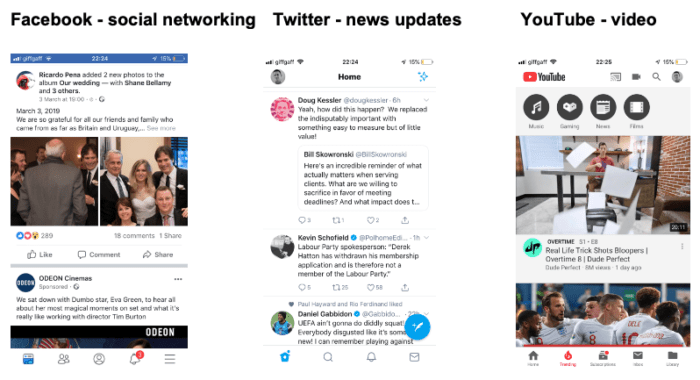
Using the insight collected from the previous step, consider what makes your app unique. Taking the bakery example from before, the ‘pick up and go’ feature may provide real value for your customer segment. But carry out primary research, ask questions, and test this out:
- Who else is providing this feature?
- Are your competitors doing anything similar?
- Are there any other features you may have missed?
The goal is to provide something that works better than the competition. If there are other, secondary features, add these as updates in later versions (see step four).
3. Create a distinctive design
Your app’s design is very important, although design in this context is more than just look and feel. Three areas to consider include:
- User experience (UX)
- User interface (UI)
- Graphic design
User experience (UX)
Take time to map out the key journeys users will encounter. For our bakery example, this might include:
- Sign in/ register
- Select location
- Choose order
- Confirm
- Pay
There may be other journeys related to secondary features, such as cake customization or refer a friend, but for now, the primary journey should be prioritized.
User interface (UI)
User interface design focuses on anticipating what users might need to do and ensuring that the interface has elements that are easy to access, understand, and use to facilitate those actions.
Users will expect your app to contain certain interface elements based on experiences with other, more established apps, e.g. Amazon, Facebook, Uber. Being consistent and predictable in your choices and their layout will help with task completion, efficiency, and satisfaction.
Graphic design
The way your app looks may seem superficial but people do judge books by their covers. Ensure your app conforms to your broader brand guidelines and is optimized for the mobile experience. This will help add credibility and instill confidence in your app.
4. Release regular updates
The creation of a mobile app takes a lot of time, work, and preparation. This process is rarely a one-time thing. Unlike websites, apps live on mobile phones that run operating systems that are constantly changing. When we also consider bugs and changes in user preference, we can begin to see why mobile apps are a moving feast.
It’s therefore important to constantly monitor key metrics and evaluate the performance of your app. Take notice of what is/isn’t working and any feedback users are leaving on the App Store and Google Play.
Pay close attention to planned and proposed changes to operating systems. Whilst it’s best to develop for both iOS and Android, you may find that your users prefer one versus the other, so prioritize your efforts accordingly.
AppSamurai provides a useful list of the best moments to modify your app:
- New devices and technologies
- Underperforming metrics
- Changes in app design trends
- Desire for new features
- Adjusting for operating system updates
- Users’ feedback for improvement
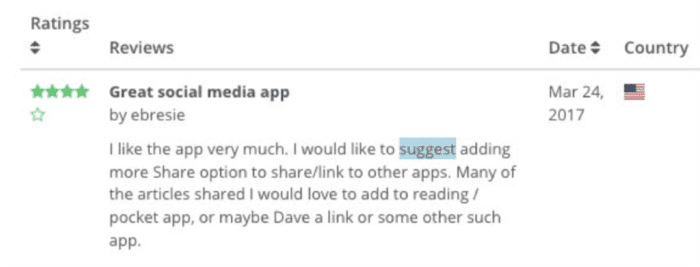
5. Test, measure and optimize
As with any digital property, testing is crucial. With the fast-changing, dynamic landscape described above, have a regular testing and optimization cycle for your mobile app. A sound process will ensure your app is performing well versus target and give you the right level of insight to optimize.
In-app analytics allows you to understand how users are interacting with the app, which elements are working/not working, and the different actions they carry out. Evaluating this data will help you understand whether users are behaving versus what you planned/expected, or whether there is a gap that needs addressing.
Common tools for tracking in-app analytics include:
Digital strategy in a time of crisis
Discover more blogs and ways to kickstart your organization's digital transformation strategy with actionable, practical online learning that gets results, fast!
See More
Summary
Mobile is now a permanent feature in many of our lives. The time we spend on our mobile devices has revolutionized the way we interact with friends, family, and brands. With mobile playing such a dominant role, businesses have to consider the best way to reach and engage audiences. With apps accounting for 80% of our time on mobile, this presents a compelling business case.
For brands that decide to take the mobile app route, it’s crucial to have a clear understanding of what audiences are looking for and provide a compelling user experience that solves a genuine problem. Design is important and is much more than color and identify - it’s also about creating a consistent experience that conforms to accepted principles and guidelines.
Once an app goes live, it’s rarely the end of the story. Regular updates that align with changing user preferences and operating system updates are essential and as with all digital marketing, regular testing and optimization using a range of insights and analytics will help ensure marketers keep pace with the ever ever-evolving landscape.







